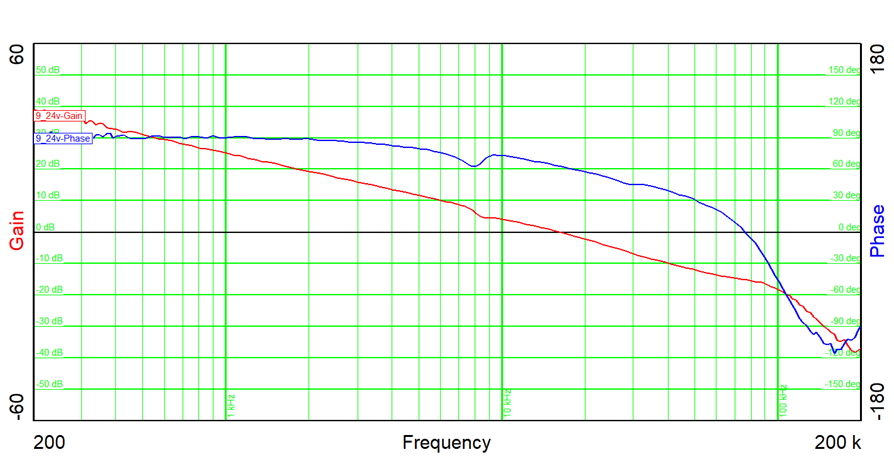TIDT319 December 2022
- Description
- Features
- Applications
- 1Test Prerequisites
- 2Testing and Results
- 3Waveforms for 2 × LM5143A-Q1 in Four Phase Configuration and Interleaved Operation
- A Individual Adjusting of the Rising Edge and Falling Edge With LM5143A
- B Measurements Across the Low-Side FETs to Check at All Four Phases
- C ON Demand – Assembly of Thermal Interface
2.5.2 24-V Input Voltage
 Figure 2-6 Bode Plot at 24-V Input Voltage
Figure 2-6 Bode Plot at 24-V Input Voltage